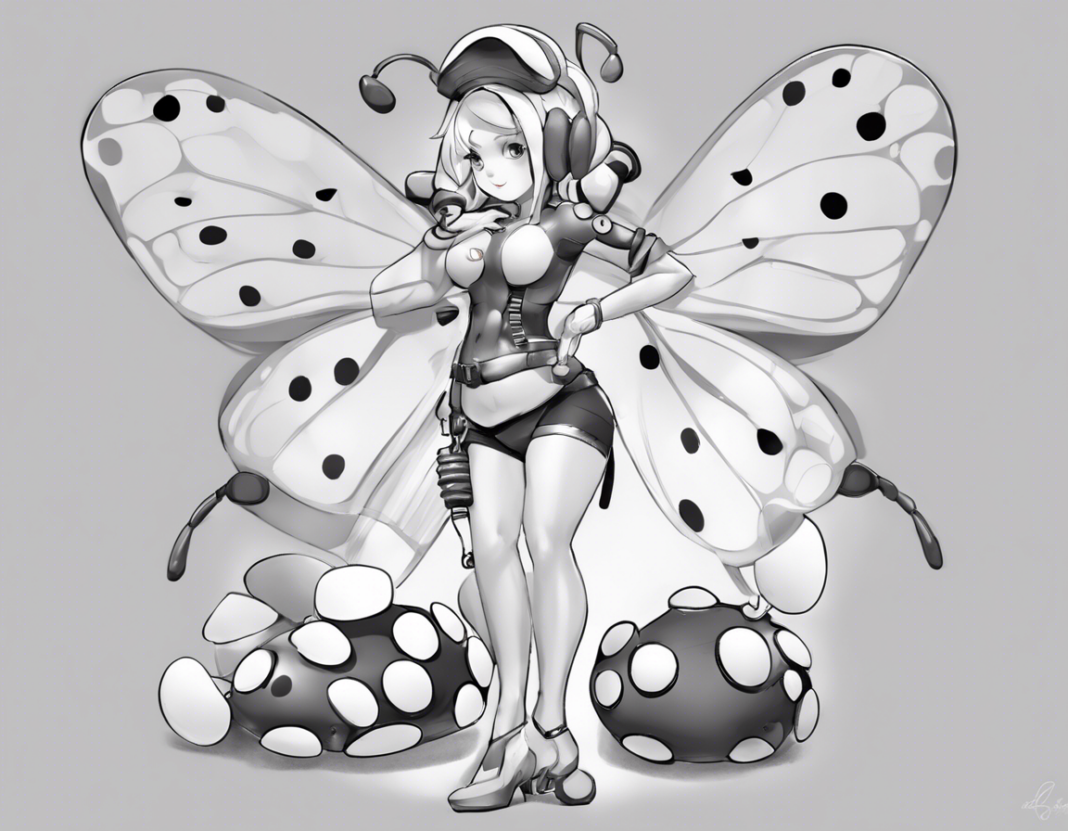The thick ladybug is a unique and fascinating insect that is known for its distinctive appearance and intriguing behaviors. While most people are familiar with the common ladybug, the thick ladybug is a less well-known species that has captured the interest of entomologists and nature enthusiasts alike. In this article, we will explore the world of the thick ladybug, examining its physical characteristics, habitat, diet, behavior, and more.
Physical Characteristics
The thick ladybug (scientific name: Coccinella crassa) is distinguishable from other ladybug species by its larger body size and thicker exoskeleton. On average, thick ladybugs measure around 8 to 10 millimeters in length, making them noticeably larger than the common ladybug. Their exoskeleton is a vibrant shade of red or orange with distinct black spots, though some individuals may have a more subdued coloration. The elytra (wing covers) of the thick ladybug are also thicker and more robust compared to other ladybug species.
Habitat
Thick ladybugs are primarily found in temperate regions across the globe, with populations thriving in forests, grasslands, and urban areas. These insects are adaptable and can make their homes in a variety of environments as long as there is an ample supply of their preferred prey. Thick ladybugs are known to seek out sheltered spots such as under leaves, bark, or rocks for protection from predators and inclement weather.
Diet
One of the most intriguing aspects of the thick ladybug is its dietary preferences. While many ladybug species are known for feeding on aphids and other soft-bodied insects, the thick ladybug has a more diverse palate. In addition to aphids, thick ladybugs also consume smaller insects, larvae, and even plant matter. This varied diet allows them to thrive in a range of habitats where their preferred prey may be scarce.
Behavior
Thick ladybugs exhibit solitary behavior for most of their lives, only coming together during the mating season. Males will engage in elaborate courtship rituals to attract females, with competition among males for mating partners not uncommon. Once mating has occurred, females will lay their eggs in clusters on the undersides of leaves or other concealed locations. The larvae that hatch from these eggs will undergo several molts before reaching adulthood.
Reproduction
The reproductive cycle of the thick ladybug is a fascinating process that unfolds over several weeks. After mating, females will lay anywhere from 20 to 30 eggs in a single batch. These eggs will hatch into larvae in 4 to 7 days, depending on environmental conditions. The larvae will then go through several instars, during which they will grow in size and develop their distinctive coloration. The entire process from egg to adult can take anywhere from 3 to 4 weeks.
Predators
Despite their bright coloration, thick ladybugs are not defenseless against predators. Like other ladybug species, they possess a foul-tasting chemical called reflex blood that they secrete when threatened. This chemical repels predators and serves as a deterrent to would-be attackers. In addition, the thick exoskeleton of the ladybug provides physical protection against predators such as birds, spiders, and other insects.
Conservation
While the thick ladybug is not currently considered endangered, habitat loss and pesticide use pose significant threats to their populations. Conservation efforts focused on preserving natural habitats, reducing pesticide exposure, and increasing public awareness about the importance of these insects can help ensure their continued survival. By taking steps to protect the habitats of the thick ladybug, we can also help safeguard the many other species that rely on these ecosystems for their survival.
Frequently Asked Questions (FAQs)
Q: Are thick ladybugs harmful to plants or crops?
A: Thick ladybugs are beneficial insects that help control pest populations. They primarily feed on aphids and other small insects that can damage plants, making them valuable allies in garden and agricultural settings.
Q: Can thick ladybugs bite humans?
A: While ladybugs are capable of biting, they rarely do so unless they feel threatened. Their bites are typically harmless to humans and do not cause any serious health concerns.
Q: How long do thick ladybugs live?
A: The lifespan of a thick ladybug can vary depending on environmental conditions and availability of food. On average, they can live for around 1 to 2 years in the wild.
Q: Do thick ladybugs hibernate during the winter months?
A: Yes, thick ladybugs undergo a period of dormancy during the winter known as hibernation. They seek out sheltered spots to wait out the cold weather until temperatures warm up again.
Q: Are thick ladybugs attracted to light?
A: Like many insects, thick ladybugs are attracted to light sources at night. This behavior can sometimes lead them into homes or other buildings where they may be found near windows or light fixtures.
In conclusion, the thick ladybug is a remarkable insect that plays a vital role in maintaining ecological balance. By learning more about these fascinating creatures and taking steps to protect their habitats, we can ensure that future generations will continue to marvel at their beauty and resilience.

